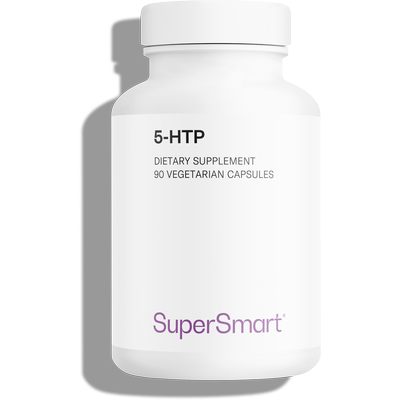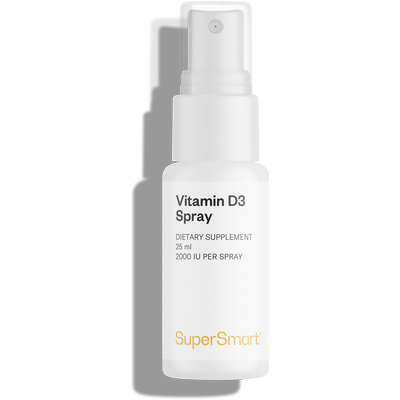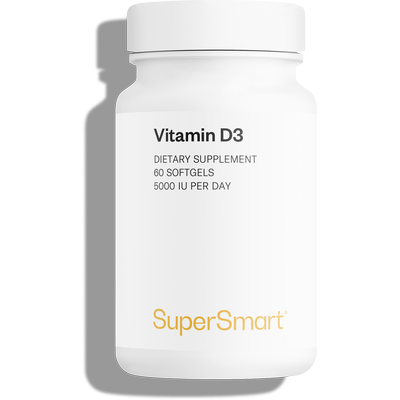24-10-2018
Suffering from seasonal affective disorder? Natural solutions
 If you recognise at least three of the following symptoms and you’ve noticed that they always appear at the same time of year (from October to December), you’re probably suffering from seasonal affective disorder:
If you recognise at least three of the following symptoms and you’ve noticed that they always appear at the same time of year (from October to December), you’re probably suffering from seasonal affective disorder:-
- Persistent low mood, particularly noticeable on waking.
- Loss of pleasure in activities you normally find enjoyable.
- Chronic tiredness however much sleep you’ve had.
- Loss of interest, decreased productivity, feeling as if you’re ‘running on empty’.
- Loss of libido.
- Tendency to become isolated.
- Dark thoughts.
Scientific research has identified two ways in which seasonal affective disorder can be effectively prevented and treated: increase the time you spend outdoors (to at least an hour a day) and take some exercise1,2. Fortunately, there are also other ways to prevent this form of depression which has such a negative impact on everyday life.
Don’t do things by halves – go for a proper walk in the countryside
Though still unclear, the mechanisms of depression continue to be of significant interest to the scientific community. Researcher Gregory Bratman of Stanford University in the United States proposed the theory, which we all feel intuitively, that a walk in the countryside is more beneficial than a walk in town. To test his hypothesis, he compared the brain activity of forest-walkers with that of people walking in an urban setting along a very busy road. After 90 minutes’ walking, he and his team examined both groups of walkers’ prefrontal cortex, an area of the brain involved in triggering depression. As expected, they found it was less active in the ‘country’ walkers 3. The walkers themselves also said they felt a greater release from destructive thoughts by the end of their exercise compared with their pavement-pounding counterparts.Running, walking, gardening, meditating … it doesn’t matter what you do as long as it’s in the open air
A study recently showed that Nature’s unique benefits increase with the level of activity. In other words, running in the forest is even better than walking4. However, this study does not appear to have taken into account the needs of the individual – we should above all listen to our own bodies. Avoiding stress and depression does not require intensive running, quite the opposite. A number of experiments have shown that engaging in calm outdoor activities, such as gardening or meditation, is highly effective at lowering blood levels of cortisol, also known as the stress hormone5. Research has shown that the mere act of looking at Nature may even speed up the healing process! Professor Roger Ulrich’s study at a Pennsylvania hospital showed that patients recuperating after gallbladder surgery who had a window view of Nature recovered faster than those without such a view6. Could this really be just coincidence?If we consider our history, the conclusions reached in the above-mentioned studies seem almost obvious. As biped animals, human beings have always walked and our capacity for endurance is what has made possible our remarkable evolution. Our ancestors ran long distances every day out in the wild, far from today’s built-up, polluted roads: it’s little wonder then that our bodies aredependent on Nature. Its impact intersects with so many fundamental mechanisms that scientists have given this ‘green space effect’ the symbolic name of vitamin G. And what’s unique about this vitamin is that it can’t be manufactured and sold. Nothing, a priori, can replace the breath of wind that stirs our senses, the scent of plants that reawaken memories, the mosaic of colours that arouse our emotions … It is when we are out walking that our thoughts and imagination can truly run free. But with today’s increasingly sedentary lifestyles, the act of walking is under serious threat. Everything seems to be conspiring to prevent us from walking and thinking . In fact, this is probably the worst scourge of modern life, far more troubling even than the invariable processing of our food.
Advice on how to get started with your outdoor walks
If you’re unsure where to begin, here are some tips on kick-starting your outdoor walking program:-
- Get out of the city and choose a forest, park or open-air trail.
- Observe what’s in your immediate vicinity (the grass, flowers, sand …).
- Observe what’s further away (the landscape, the horizon…).
- Focus on what you can hear (the birds, the wind, the waves …).
- Be aware of your body (its movements, its relaxation, its rhythm …).
- Begin with 10-minute walk and increase gradually to around an hour.
- Remember to keep breathing during your walk, making sure you breathe through your nose, and take deep breaths.
- Take regular breaks to focus on your breathing or on something around you (a tree, the scenery, a path, a cloud) /> - If while you’re walking you feel you’re dwelling on negative thoughts, alternate between different objects of concentration for around 10 seconds each:
What happens if you can’t walk in the countryside?
Unfortunately, not everyone can spend an hour a day walking in the countryside, due more to the hours they work, or where they live, than a reluctance to do so. If this applies to you, rest assured that there are two other available options that have been proven to prevent or treat seasonal affective disorder:-
- Supplement with vitamin D. Produced by the body on exposure to the sun’s ultraviolet rays, vitamin D is in short supply during the winter (up to 85% of the adult population may be deficient). Research has already shown that it may improve symptoms of seasonal depression, in addition to the many health benefits it offers 7. You may be interested to know that a new spray form has just been launched which is smarter, more effective, and additive-free. Be sure to take advantage of this new product!
- Get yourself an artificial sunrise simulator. This form of phototherapy reproduces the natural sunrise and reduces the intensity of seasonal depression symptoms 8. You could also try a white light lamp for its light therapy benefits9, though it is quite time-consuming: between 30 and 45 minutes’ exposure to a light intensity of 10,000 lux is recommended each morning. Relief of symptoms is normally felt after two to five days’ use, but it takes several weeks before there’s a significant improvement 10. You could also consider supplementing with 5-HTP, an amino acid that benefits individuals with depression who do not respond to light therapy11,12.
Whether through evolution or revolution, it has always been ‘the walkers’ among us who have changed the world. You don’t need to be that ambitious – simply change your own life!
References
1. Groom KN, O'Connor ME. Relation of light and exercise to seasonal depressive symptoms: preliminary development of a scale.Percept Mot Skills, 1996;83:379-83.
2. Pinchasov BB, Shurgaja AM, et al. Mood and energy regulation in seasonal and non-seasonal depression before and after midday treatment with physical exercise or bright light. Psychiatry Res. 2000 Apr 24;94(1):29-42.
3. Nature experience reduces rumination and subgenual prefrontal cortex activation. Gregory N. Bratmana,J. Paul Hamilton et al. PNAS, 2015, 8567–8572
4. Hansmann, R.; Hug, S.; Seeland, K. Restoration and stress relief through physical activities in forests and parks. Urban Forestry Urban Greening 2007, 6, 213–225.
5. Van den Berg, A.E.; Custers, M.H.G. Gardening promotes neuroendocrine and affective restoration from stress. J. Health Psychol. 2011, 16, 3–11.
6. Ulrich, R.S. View through a window may influence recovery from surgery. Science 1984, 224, 420–421
7. Gloth, F. M., III, Alam, W., and Hollis, B. Vitamin D vs broad spectrum phototherapy in the treatment of seasonal affective disorder. J Nutr Health Aging 1999;3(1):5-7.
8. Golden RN, Gaynes BN, et al. The efficacy of light therapy in the treatment of mood disorders: a review and meta-analysis of the evidence. Am J Psychiatry. 2005;162(4):656-62.
9. Lam RW, Levitt AJ, et al. The Can-SAD study: a randomized controlled trial of the effectiveness of light therapy and fluoxetine in patients with winter seasonal affective disorder. Am J Psychiatry. 2006;163(5):805-12.
10. Terman M, Terman JS. Light therapy for seasonal and nonseasonal depression: efficacy, protocol, safety, and side effects. CNS Spectr. 2005;10(8):647-63; quiz 672.
11. Ghadirian AM, Murphy BE, Gendron MJ. Efficacy of light versus tryptophan therapy in seasonal affective disorder. J Affect Disord. 1998 Jul;50(1):23-7.
12. McGrath RE, Buckwald B, Resnick EV. The effect of L-tryptophan on seasonal affective disorder. J Clin Psychiatry. 1990 Apr;51(4):162-3.
Order the nutrients mentioned in this article
Further reading
02-02-2015
L-tryptophan is one of eight essential amino acids in the human diet. It is the metabolic precursor of serotonin, melatonin and niacin. It was discovered...
Read more10-04-2019
In a review of published studies on S-adenosyl methionine (SAMe), the American Agency for Healthcare Research and Quality (AHRQ) concluded that SAMe was effective at...
Read more11-11-2014
There is a nutrient - S-adenosyl-methionine (SAMe) - that’s as effective as prescription drugs, works twice as fast and has no unwelcome side-effects. Depression is...
Read more© 1997-2025 Fondation pour le Libre Choix
All rights reserved
All rights reserved
Free
Thank you for visiting our site. Before you go
REGISTER WITHClub SuperSmart
And take advantage
of exclusive benefits:
of exclusive benefits:
- Free: our weekly science-based newsletter "Nutranews"
- Special offers for club members only




















